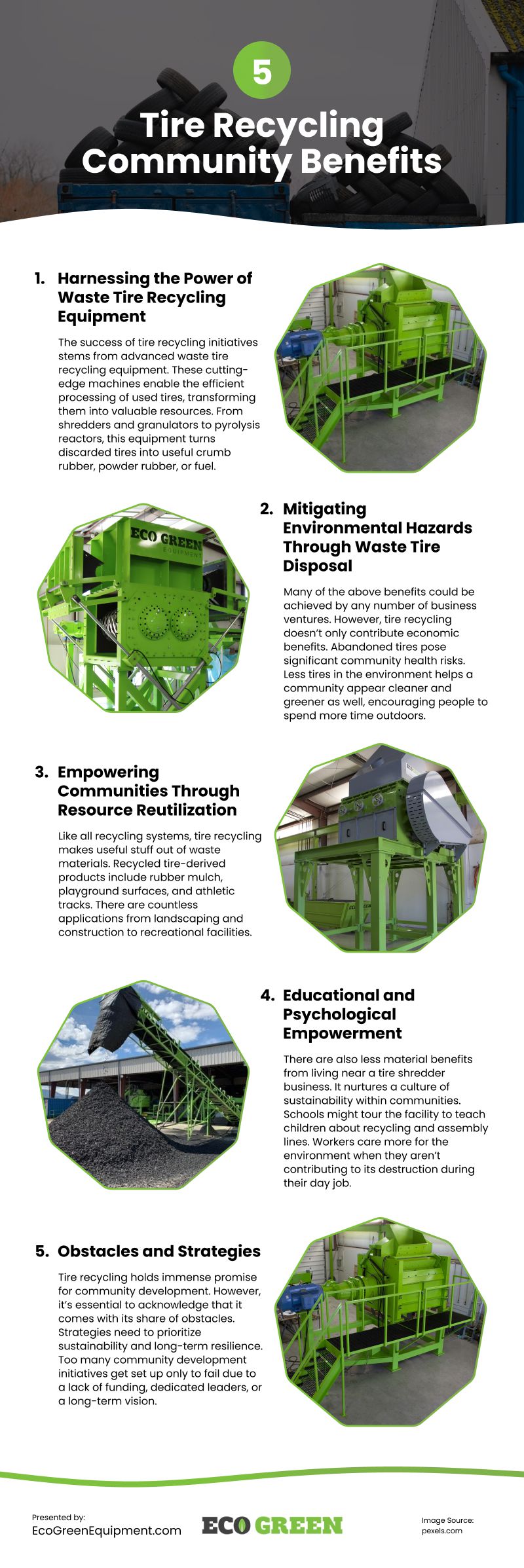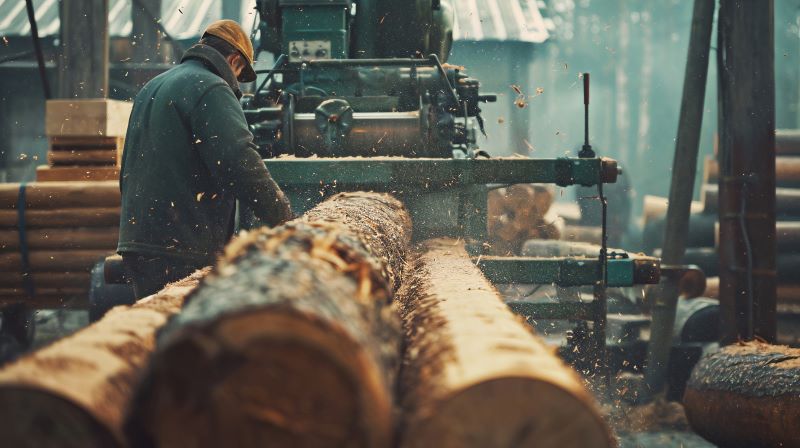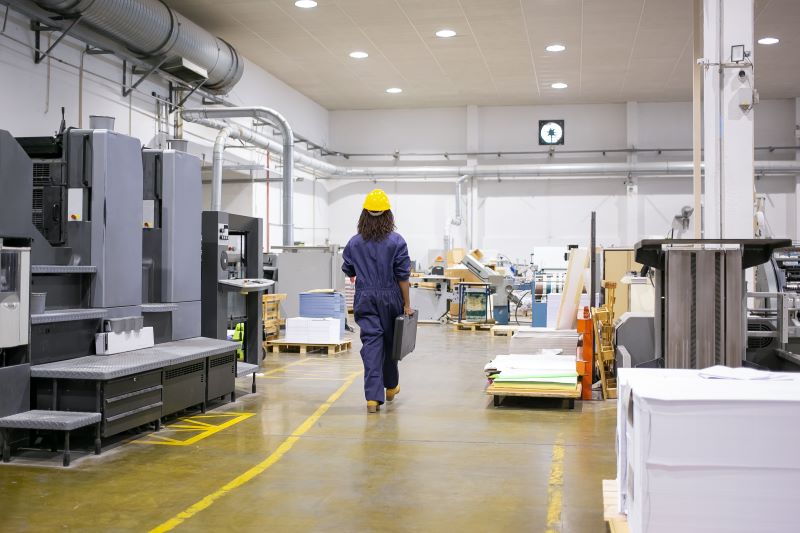Environmental sustainability and community development are at the forefront of global concerns. Unfortunately, progress toward development often leaves behind a wake of environmental destruction. The industrial revolution in the UK is a prime example. The introduction of factories raised the standard of living for millions. Yet the air pollution from the coal power plants coated the trees with charcoal dust and started the global phenomenon of humans causing climate change.
Innovative solutions that address both human well-being and protect the environment are in high demand. There are many initiatives addressing these often-competing imperatives in creative ways. One solution is surprisingly simple and holds immense potential: Tire recycling.
In general, as communities grow, the production of goods, litter, and other environmental pollution also increases. Tire recycling decreases the waste in the environment while still producing valuable products. But waste reduction is only the beginning. This blog post explains how tire recycling can drive community development in many unlikely areas.
Harnessing the Power of Waste Tire Recycling Equipment
The success of tire recycling initiatives stems from advanced waste tire recycling equipment. These cutting-edge machines enable the efficient processing of used tires, transforming them into valuable resources. From shredders and granulators to pyrolysis reactors, this equipment turns discarded tires into useful crumb rubber, powder rubber, or fuel.
However, the machines can’t do it all alone. Recycling equipment contributes to community development by creating employment opportunities as well. Tire recycling facilities require skilled labor for operation, maintenance, and management, thus generating jobs within the community. This not only reduces unemployment rates but also helps other businesses by injecting money into the local economy.
Tire recycling plants stimulate ancillary industries, such as transportation and logistics. The rubber might be used to create a soccer turf, which will then become a community sports hub, further amplifying the ripple effect of community development. As these facilities build off each other, people are more attracted to the area and less likely to move on after a few years. Long-term, established residents are crucial to sustainable community development.
Mitigating Environmental Hazards Through Waste Tire Disposal
Many of the above benefits could be achieved by any number of business ventures. However, tire recycling doesn’t only contribute economic benefits. Abandoned tires pose significant community health risks. These include:
- Creating breeding grounds for pests and disease vectors like mosquitoes
- Leaching harmful chemicals into the soil and waterways.
- Fueling incredibly damaging and dangerous tire fires which are difficult to extinguish.
With a tire recycling plant in town, you reduce all of these risks. Furthermore, tire recycling contributes to reducing carbon emissions and energy consumption. Processes like pyrolysis, convert waste tires into valuable resources such as oil, carbon black, and steel. These recycled materials serve as sustainable alternatives to raw resources that come from extractive mining operations.
Less tires in the environment helps a community appear cleaner and greener as well, encouraging people to spend more time outdoors.
Empowering Communities Through Resource Reutilization
Like all recycling systems, tire recycling makes useful stuff out of waste materials. Recycled tire-derived products include rubber mulch, playground surfaces, and athletic tracks. There are countless applications from landscaping and construction to recreational facilities. By utilizing these eco-friendly alternatives, communities not only reduce their reliance on mined resources but also promote the idea of a circular economy, which other local businesses are likely to emulate.
Educational and Psychological Empowerment
There are also less material benefits from living near a tire shredder business. It nurtures a culture of sustainability within communities. Schools might tour the facility to teach children about recycling and assembly lines. Workers care more for the environment when they aren’t contributing to its destruction during their day job.
Tire recycling initiatives can be leveraged to address social issues and promote community cohesion. Collaborative efforts to clean up illegal tire dumps and establish recycling programs instill a sense of pride and ownership among residents, fostering community engagement and solidarity.
Obstacles and Strategies
Tire recycling holds immense promise for community development. However, it’s essential to acknowledge that it comes with its share of obstacles. These challenges include:
- Inadequate infrastructure
- Start-up costs
- Market volatility for products
Addressing these challenges requires concerted efforts from:
- Local investors
- Industry stakeholders
- Community leaders
Strategies need to prioritize sustainability and long-term resilience. Too many community development initiatives get set up only to fail due to a lack of funding, dedicated leaders, or a long-term vision.
Altogether, the opportunities presented by tire recycling far outweigh the challenges. By harnessing the power of waste tire recycling equipment, communities can not only tackle waste management issues but also unlock new avenues for economic growth. Tire recycling addresses both human well-being and environmental stewardship. What more could you want?
Infographic
Environmental sustainability and community development are top global concerns. One simple yet impactful solution is tire recycling. This not only reduces waste but also produces valuable products. The infographic below explains how tire recycling can drive community development in unexpected areas.





